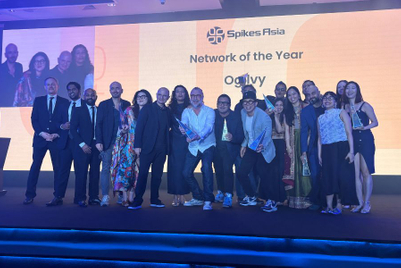
It's been more than a hundred years since John Wanamaker lamented, "Half the money I spend on advertising is wasted. The trouble is, I don't know which half."
A century later, we're still grappling with that same question.
How is that possible, when we have more data available to us than Wanamaker ever did?
Perhaps it’s because we're looking at that data the wrong way. Brand marketing has changed, but brand measurement hasn't. Crutches we've relied on for 50 years – reach, frequency, CPMs – still assume broadcast TV is the dominant brand medium. There are efforts to improve TV measurement, but is better measurement of a shrinking audience really better?
In the digital world, we can track behavior and target individuals. Marketers have invested significantly in the lower-funnel simply because it’s measurable. They’ve chosen SEO and programmatic over more elusive brand initiatives.
But these tactics are terrible at generating brand engagement, and their measurement is disconnected from upper-funnel activity.
We’ve seen firsthand that the longer you neglect the brand, the deeper the damage. Look no further than Kraft Heinz, which emaciated its brands in favor of its balance sheet. Everybody loved Heinz ketchup – until they didn't.
Once upon a time, marketers made peace with the gray area we operated in. Gut instinct was the standard operating procedure. But as digital media measurement came to dominance, we could no longer justify the gray area. The pressure to prove effectiveness digs a hole for the next CMO, who is lucky if they get to stick around for eight quarters these days.
I fear we've not only dug the metaphorical hole, but we've also fallen in.
To this day, big creative campaigns are still difficult to attribute and value. That’s making brand actions increasingly difficult to justify.
As marketers branch out into newer, broader forms of creativity, brand actions become even harder to prove, because they don't follow the traditional media playbook. How should a branded event, short film, podcast, episodic series, film or mobile game be measured? How does all of that stack up against an old-fashioned 30-second spot?
Our media effectiveness assumptions can no longer be safely assumed. We have to ditch inadequate systems, and create a new way to measure human engagement with brand initiatives.
We already have tools we can put to use. We can measure attention, emotion and memorability across different brand interactions. We can use artificial intelligence and facial recognition to get new insights into consumer behavior. Tools that measure consumer engagement are on the horizon. See: Brainsights and Dumbstruck.
But the reality is, there is no magic bullet. So maybe, we should reframe our goals and agree that upper-funnel actions take time to yield results.
What if we valued holistic returns over executional ROI? What if we valued likability, consideration and purchase intent and as much as open-rates and click-throughs?
To quote Axl Rose Rose quoting "Cool Hand Luke": "What we have here is failure to communicate." And the song's refrain? "Patience… just a little patience."
Continuing to measure the old way is not just cutting into our budgets; it’s stifling our creativity. As long as the skinny end of the funnel is more measurable than the wide end, brand investment will diminish. We have to create consistent industry measurement standards to encourage brands to explore and expand the ways we engage with consumers.
I'm reminded of a conversation I either once had with a cab driver, or saw in a movie and now erroneously claim as my own:
Cabbie: "You know what put us on the moon?"
Me: "Imagination."
Cabbie: "Sure. Generations of stargazers imagined going to the moon. But what got us there were smart young people with protractors."
Bring on the protractors.
Jae Goodman is CEO Of Observatory and is on the board of directors of Effie Worldwide.


.jpg&h=334&w=500&q=100&v=20250320&c=1)

.jpg&h=334&w=500&q=100&v=20250320&c=1)
+(1).jpg&h=334&w=500&q=100&v=20250320&c=1)

.jpg&h=334&w=500&q=100&v=20250320&c=1)



.jpg&h=334&w=500&q=100&v=20250320&c=1)

+(6).jpg&h=268&w=401&q=100&v=20250320&c=1)
.jpg&h=268&w=401&q=100&v=20250320&c=1)



.jpg&h=268&w=401&q=100&v=20250320&c=1)
